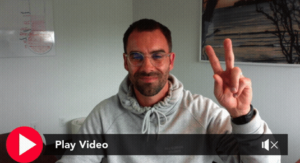With all the headlines these days, I wanted to make sure you’re clear in regard to your Variable Rate Mortgage and how it works. If you hold a Variable Rate Mortgage with TD and Envision, this content is for you! Let’s start with the basics:
- Why is your rate considered variable?
- Because when the Bank adjusts their Prime rate your interest rate will change. Therefore your interest rate can vary throughout your term.
- How do I calculate my Interest Rate
- You take the current Prime rate (5.45% or 5.60% (TD Canada Trust)) and minus the discount you received based on your contract. For example: Prime – .45% = 5%. Your discount off of Prime does NOT vary, only the Prime rate does.
- What causes the Banks to change the Prime Rate?
- When the Bank of Canada adjusts their overnight rate, the banks will do the same. Therefore if the Bank increases their overnight rate by .75% so will the Banks.
- How is my Variable Rate Mortgage different than others.
- When the Bank of Canada adjusts the overnight rate, your Bank adjusts the Prime rate, which adjust your interest rate, your amortization is extended but your payment remains the same. In order to keep your Amortization in line after a change in Prime, you need to contact your Bank and increase your payment based on your new interest rate. Or you can keep your payment as is and the length of time (amortization) to pay off your mortgage will either increase or decrease depending on which way the Prime rate is adjusted. Other Variable Rate that are considered Adjustable Rate Mortgages, automatically adjust your payment once the Prime Rate changes.
- What happens if I don’t adjust my payment as the Prime rate increases
- Your amortization will increase greater than the original length it started with. This is not the biggest issue for most, especially for clients that want a consistent payments, but where it can become an issue is when either of the following happen:
i. When 100% of your payment is going towards interest and not paying off any of your outstanding balance. If the rate continues to increase past the trigger rate, the bank will start adding the interest not covered by your payment to your outstanding balance.
ii. Trigger point:
- For conventional mortgages (uninsured, 30 year amortization) – When your current outstanding mortgage exceeds 80% of your homes value
- For insured mortgages – when your current outstanding mortgage exceeds 105% of your homes value
- I’ve reached my Trigger Rate, now what?
- Depends. The Bank will not contact you till you reach your Trigger Point, and therefore if you have an extremely low mortgage compared to your home value, then you will be fine. Well, not really as your mortgage is increasing instead of decreasing, but at least your payment is staying the same.
- You can contact your Bank and have them readjust your Payment to match the current interest rate
- You can start putting any extra funds you have towards your mortgage to avoid reaching the Trigger Point while rates are high. Think of it like having a $4,000 credit card bill. Some people only put $2,000 towards it as that’s all they have and that’s better than nothing. For example – Your current payment is $1,000, but you should be paying $2,000. Maybe that’s too much for your lifestyle and therefore you keep your payment at $1,000 and put an extra $500 each month towards the outstanding balance. Effectively your payment is now $1,500.
- I’ve hit my Trigger Point, now what?
- Your Bank will contact you and ask that you either increase your payment or do a lump sum payment if too much intertest has been added to your mortgage/term. If you choose to adjust your payment it would be increased to what it would need to be to pay the mortgage out within the remaining CONTRACTUAL amortization.
- Any Tips?
- If you want to keep your payment low but are worried about the future payment increasing dramatically at renewal and/or additional interest accruing and possibly being capitalized into the mortgage balance it’s best to make lump sum payments (as mentioned above). Capitalization (adding to your outstanding balance) happens when prime increases so much that your interest rate is higher than the trigger rate resulting the additional excess interest over and above your payment being added to the mortgage balance. The lump sum payment option will reduce the principal balance, allow your payment to stay the same and result in reducing the actual amortization of the loan, therefore offsetting the extension of amortization resulting from prime rate increases . Your Bank allows you to make unlimited prepayments up to 15% of original mortgage amount every calendar year with the minimum payment being $100.00.
As always, I’m a phone call or email away if you have any further questions and if you know of anyone you feel that would benefit from this post please feel free to pass it along.


